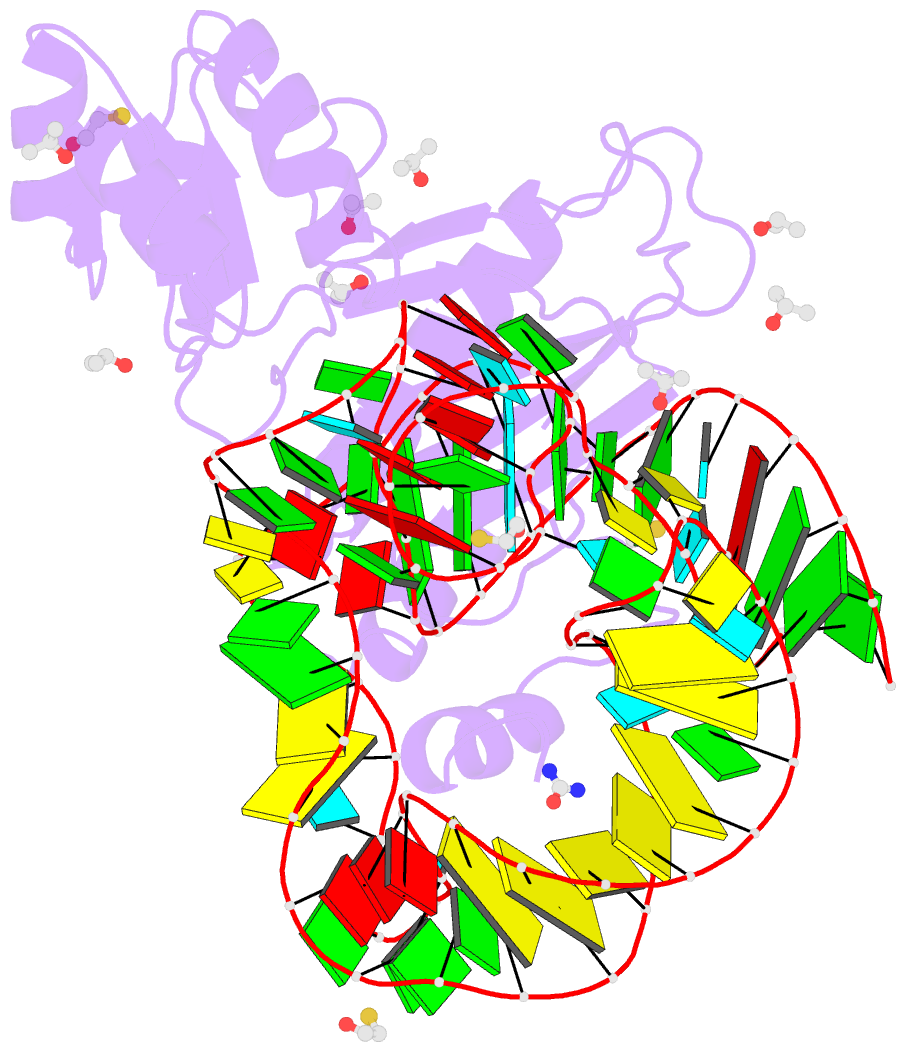Summary information and primary citation
- PDB-id
- 4qg3; SNAP-derived features in text and JSON formats;
DNAproDB
- Class
- ribosomal protein-RNA
- Method
- X-ray (2.0 Å)
- Summary
- Crystal structure of mutant ribosomal protein g219v tthl1 in complex with 80nt 23s RNA from thermus thermophilus
- Reference
- Tishchenko S, Kostareva O, Gabdulkhakov A, Mikhaylina A, Nikonova E, Nevskaya N, Sarskikh A, Piendl W, Garber M, Nikonov S (2015): "Protein-RNA affinity of ribosomal protein L1 mutants does not correlate with the number of intermolecular interactions." Acta Crystallogr.,Sect.D, 71, 376-386. doi: 10.1107/S1399004714026248.
- Abstract
- Ribosomal protein L1, as part of the L1 stalk of the 50S ribosomal subunit, is implicated in directing tRNA movement through the ribosome during translocation. High-resolution crystal structures of four mutants (T217V, T217A, M218L and G219V) of the ribosomal protein L1 from Thermus thermophilus (TthL1) in complex with a specific 80 nt fragment of 23S rRNA and the structures of two of these mutants (T217V and G219V) in the RNA-unbound form are reported in this work. All mutations are located in the highly conserved triad Thr-Met-Gly, which is responsible for about 17% of all protein-RNA hydrogen bonds and 50% of solvent-inaccessible intermolecular hydrogen bonds. In the mutated proteins without bound RNA the RNA-binding regions show substantial conformational changes. On the other hand, in the complexes with RNA the structures of the RNA-binding surfaces in all studied mutants are very similar to the structure of the wild-type protein in complex with RNA. This shows that formation of the RNA complexes restores the distorted surfaces of the mutant proteins to a conformation characteristic of the wild-type protein complex. Domain I of the mutated TthL1 and helix 77 of 23S rRNA form a rigid body identical to that found in the complex of wild-type TthL1 with RNA, suggesting that the observed relative orientation is conserved and is probably important for ribosome function. Analysis of the complex structures and the kinetic data show that the number of intermolecular contacts and hydrogen bonds in the RNA-protein contact area does not correlate with the affinity of the protein for RNA and cannot be used as a measure of affinity.





